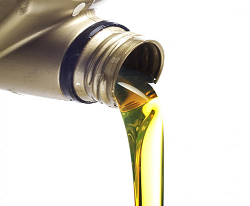Call us
+98 21 7108 5000
Email us
ceo@k-hco.com

Rubber Process Oil
Rubber Process Oil
Rubber process oil is a petroleum-based oil obtained from distillates or crude oil residues and used in rubber production. Rubber Process Oil is most widely used during the rubber vulcanization process to reduce friction and prevent sticking. Rubber process oils can be ideal for manufacturing rubber products because they are usually non-reactive.
Characteristics of Rubber Process Oil

Rubber process oil usually appears as a pale yellow to brown, viscous liquid. It has a faint smell like petroleum and is insoluble in water. This product consists of hydrocarbons with chain lengths of 9c to 24c, an oil viscosity of 22 to 70 at 100°C, and a flash point of 230°F or 110°C.
Rubber Process Oil is commonly used as an additive or extender in rubber compounds to improve tensile strength. Rubber process oil acts as a softener and makes rubber compounds flexible and improves physical properties. It has excellent lubrication properties that can be used to reduce friction and wear between moving parts. It helps a lot to improve rubber elasticity, prevent cracking and vulcanization process.
Chemical characteristics of Rubber Process Oil

Rubber Process Oil is an oily substance that is used as a softener in rubber production. It usually consists of petroleum hydrocarbons derived from crude oil and can vary in composition based on the crude oil used. Common components of rubber process oil include paraffinic, naphthenic and aromatic hydrocarbons. This product is non-volatile, non-flammable, non-toxic and has relatively low viscosity. Also insoluble in water, it is designed to be chemically inert, meaning it does not react with other components of a rubber compound, helping to ensure that the rubber product's optimal performance is maintained.
Physical characteristics of Rubber Process Oil
Rubber process oil has a high viscosity index, meaning that it maintains its viscosity over a wide temperature range. It has excellent thermal stability that allows it to remain fluid at low temperatures. It is non-corrosive and has excellent oxidation stability, meaning that it does not decompose easily under heat and air conditions. It has a high flash point, which means that it does not burn, does not explode, and does not produce dangerous vapors when heated, which greatly contributes to increasing safety in industrial environments where rubber processing oil is used. Rubber Process Oil helps reduce friction and wear in machinery, which leads to increased equipment life.
Application of Rubber Process Oil
Due to its chemical and physical properties, this versatile product is used in various industries. It is usually used in the manufacture of rubber items such as tires, hoses, belts and washers. Rubber Process Oil is widely used to soften, lubricate and protect rubber surfaces, reduce wear and tear, improve flexibility and elasticity of tires. It is also used as a processing aid in rubber production to help maintain elasticity during vulcanization. It also helps reduce friction between rubber components and increases the life of products. This oil helps reduce heat generation during rubber processing, which prevents potential hazards.
How to produce Rubber Process Oil
Rubber process oil is made from different fractions of crude oil through a process called hydrocracking. In this process, crude oil is heated to extremely high temperatures and passed through a catalyst that breaks down more complex compounds into simpler components. The resulting product is then further distilled to remove any remaining components. Finally, the product is combined with various additives to produce Rubber Process Oil and use it in rubber and plastic products.
Final word
Rubber Process Oil is a hydrocarbon oil obtained from petroleum distillation. It is used in the rubber industry to help soften rubber and give it more elasticity and flexibility. It has good lubricating properties and helps to improve dispersion in rubber compounds. Also, this oil is considered one of the important products for improving wear resistance, improving tensile strength and creating thermal and chemical resistance in rubber and plastic products.

